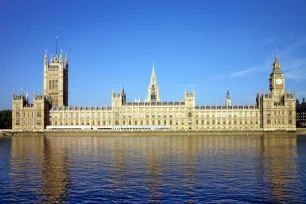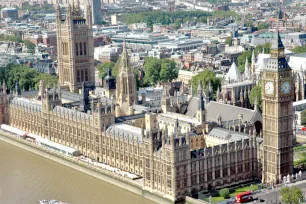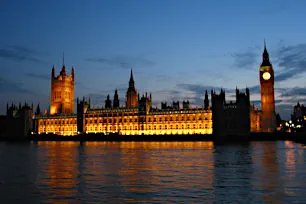The Houses of Parliament, also known as the Palace of Westminster, is the seat of the two parliamentary houses of the United Kingdom: the House of Lords and the House of Commons.
The most famous feature of the Houses of Parliament is its clock tower, known as Big Ben.
The Seat of Government
In the middle of the eleventh century, King Edward the Confessor had moved his court to the Palace of Westminster, situated on a central site near the River Thames. In 1265 a parliament was created with two houses: the Lords and the Commons. The House of Lords met at the Palace of Westminster, while the House of Commons did not have a permanent location.
After King Henry VIII moved his court to Whitehall Palace in 1530, the House of Lords continued to meet in Westminster. In 1547 the House of Commons also moved here, confirming Westminster as the central seat of government, a position it still holds today.
The new Palace of Westminster
In 1834 a fire destroyed the Palace of Westminster, leaving only the Jewel Tower, the crypt and cloister of St. Stephen’s and Westminster Hall intact. After the fire, a competition was organized to create a new building for the two houses of parliament.
A design by Sir Charles Barry and his assistant Augustus Welby Pugin was chosen from ninety-seven entries. They created a large but balanced complex in Neo-Gothic style and incorporated the buildings that survived the fire. The whole complex was finished in 1870, more than thirty years after construction started. It includes the Clock Tower, Victoria Tower, House of Commons, House of Lords, Westminster Hall and the Lobbies.
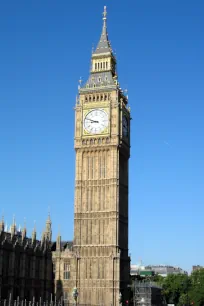
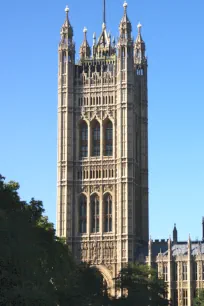
Big Ben
The most famous part of Charles Barry’s design is the elegant clock tower. Originally called St. Stephen’s Tower, it was soon named after the tower’s largest bell, the Big Ben. A light at the top of the tower is illuminated when Parliament is sitting at night.
Commons Chamber & Lords Chamber
The Commons Chamber, where the House of Commons meets, was destroyed during the Second World War but rebuilt in 1950 by Sir Giles Gilbert Scott in the same Neo-Gothic style. The Commons Chamber’s interior (with green colored benches) is rather austere compared to the lavishly decorated Lords Chamber (with red colored benches).
Over the centuries, the balance of power has moved from the elitist House of Lords to the more agitated House of Commons, where the governing party and the opposition are seated opposite each other with exactly two sword lengths and one foot separating the two parties.
Central Lobby
One of several lobbies in the Houses of Parliament is the Central Lobby, where people can meet the Members of Parliament and persuade them to defend their interests. Hence the verb ‘to lobby’.
Victoria Tower
The tower opposite the Big Ben is the Victoria Tower, built in 1860. The tower contains the records of both the House of Lords and the House of Commons since 1497. During the parliamentary year, the Union Flag is hoisted on top of the 98 meter-tall tower.
Westminster Hall
The oldest hall of the Houses of Parliament is Westminster Hall, dating back to 1097. The large hammer beam roof was built in the fourteenth century and replaced the original roof, which was supported by two rows of pillars. The hall is one of Europe’s largest unsupported medieval halls.
The Houses of Parliament are open to the public, for more info see the official site of the parliament.
- Next: London Eye
- More Sights & Attractions in London


